In our 2019 Financial and Travel Objectives blog post, we jotted down on nr 2″Plan and relax two weeks somewhere in the world with the family for a SUMMER vacation”. During the year, after paying ourselves first in our investment portfolio, we set aside month after month vacation money (Layer 3 in our Financial Strategy – Saving for specific goals)
This year we decided not to travel to with the CAR as one of the kids gets car sick. Thanks to the tip of travel expert Nathalie of the travel agency Travel And Dance, we selected a trip to Corsica. An isle we didn’t visit yet in the past as a tourist. It would be the first time for the complete family to visit Corsica.
Corsica is a holiday destination which is still relatively unknown. Located south of France and just above Sardinia, it’s a small yet intriguing island, with everything from paradisiacal beaches to rugged mountains and a whole lot of history and culture in between..
Our Vacation Home
After booking the flight with Air Corsica, I started my search at the website Airbnb.com for the perfect holiday location. For a family with five people, it is not so easy to find a good vacation home in Corsica. We located a house in Santa-Lucia-di-Moriani. If you want to check out the house and location, you can click this AirBnB link.
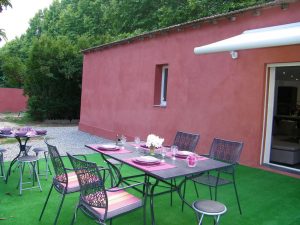
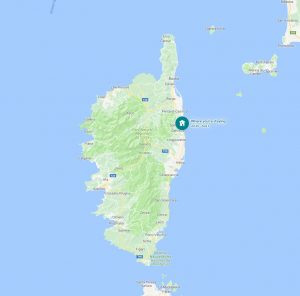
The house is not so far from Bastia and shops are very close within walking distance. It has a private garden of 1500 M2 secure fenced + barbecue + sunbeds. Unfortunately there is no swimming pool but the beach is within 5 minutes walking.
With lots of little hidden villages and plenty of gorgeous beaches along the coastline, having a car when on holiday in Corsica helps to see more of the destination. On the website Rentalcars.com, you can book and evaluate quickly and easy the different cars. We ended with a booking for a 5 persons Jeep.
Highlights of our Vacation
Below you can read the cultural and relax activities that we did during our stay.
Canyoning
This activity was definitely the highlight of the vacation.
Starting from the iconic Eiffel Bridge, the Verghellu Canyon is one of the most playful descents in Corsica. This canyon is open to children from age 10 and up. The Verghellu is one of the most complete and enjoyable canyons that Corsica has to offer. We did jumps from 10 meter high in the water and we glided several meters down on the rocks. The family did have a great enjoyable unforgettable experience !
Check out the website : By Canyon Corse
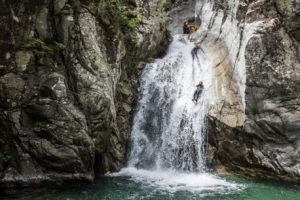
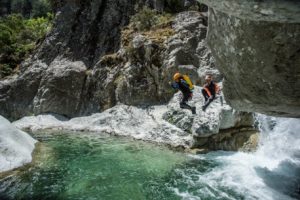
Visit of the city Bastia
Bastia is a commercial port town (the most important on Corsica) found to the north-east of the island. It is in an impressive location with the hills and Cap Corse behind the town. The town is now officially classified as a ‘Town of Art and History’ in France. There are three sections of particular interest to visitors to Bastia: the old town, the citadel, and the old harbour.
Bastia old town
It is to the old town that you will be drawn with its faded charm of narrow streets and alleys, where washing still hangs drying from ancient shuttered windows in the tall, often almost crumbling, buildings, dating largely from the 18th century. It is the character of this part of Bastia, culminating at the old port, which is the most fascinating aspect of Bastia so allow time to explore rather then rushing from ‘monument to monument’.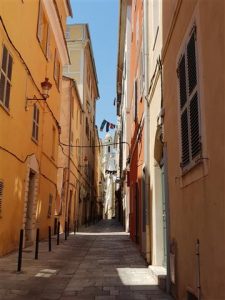
One of the main squares in the old town or the ‘Terra Vecchia’ is the Place du Marche which is home to a morning market and the large Saint-Jean-Baptiste church, an imposing church built in the 16th century. The interior of the church was renovated in baroque style in the 18th century. Nearby on Rue Napoleon is the Oratoire St Roch with a great Baroque interior and also the Oratoire de l’Immaculée Conception which has a particularly sumptuous interior including crystal chandeliers.
The harbour
There are two ports in Bastia – the original traditional one, and the more recent port where Corsica Ferries arrive with passengers from Italy and France (Nice is the most common departure point from mainland France to reach Bastia).
The old harbour is the ‘in’ place to spend your evenings in Bastia, in the many bars and restaurants, or simply promenading along the water front – be sure to walk out along the Quai des Martyrs de la Liberation for the best views of the harbour.
Dominating the old harbour is the view of the Church of Saint John the Baptist. The other buildings are painted in beautiful shades of ochre, salmon and shades of gold. Sadly nearly all need a coat of paint and you have the feeling that if this was done the harbour would change from attractive to really quite stunning.
Citadel and region
The other main part of Bastia to explore is on the other side of the old harbour around the substantial citadel. This part of the town is much trendier if slightly less impressive than its old town neighbour. The walk to the citadel passes through the gardens (le Jardin Romieu) and passed the once-very-posh houses of the Terra Nova district.
The main ‘notable’ buildings within the citadel of Bastia are the grand 14th century Governor’s Palace and a couple of churches: the church of Sainte-Marie de l’Assomption and the Baroque Oratoire-Sainte-Croix with its ‘black Christ’.
The palace of the Governors was attacked and destroyed by Nelson in 1794 and rebuilt by the French when it was used as a prison. The Nazi’s used the dungeons to imprison and torture Resistance fighters during the Second World War. It has now been renovated and is home to the Municipal Museum with exhibits including the history of Bastia and Corsica from its pre-Roman origins to its role in the second world war.
If you want to find out more about what to do in Bastia, visit the website of Tourism Bastia
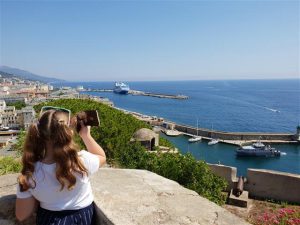
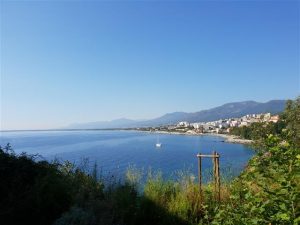
A visit to Parc Galea and the village Penta di Casinca
Combining literally nature and knowledge, Galea Park is today the largest cultural site of Corsica, extending on nine hectares of exotic and Mediterranean gardens, museums, exhibition spaces, screenings and conferences, inviting young and old to better know the island and the world around it… Air-conditioned pavilions, fountains, shady terraces and picnic areas. Interesting to learn about the nature, culture and history ! 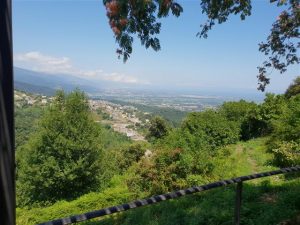
What would be Corsica without its villages? And most importantly, what would be Corsicans without their own villages? Formerly, vendetta occurred between neighbouring villagers, and rivalries between villages have always existed.
Even if they don’t necessarily live all year in their villages, Corsicans are extremely proud of them, and are attached to their family homes. Unfortunately, many houses have fallen into ruins because of joint tenancy issues between heirs.
Preservation of these houses is really important because they are an integral part of the architectural heritage. These houses, built in the mountain, stop negatives rumours and clichés saying that “Corsicans are lazy!” Penta di Casinca is one of those villages we visited in a land of history and tradition.
Built on a rocky spur, Penta di Casinca is classified as a «Picturesque site of the Department of Corsica» for its exceptional architectural beauty. In this veritable eagle’s nest, perched at an altitude of 400 m, you will discover magnificent stone houses with slate roofs, along with a superb panorama of the plain towards Bastia, and the islands of the Tuscan archipelago. This village is classified « Picturesque site of the Department of Corsica » since 28 August 1973.
Website: www.pentadicasinca.fr
Final Reflection
During this family summer vacation, we were able to relax and switch our mind off from work. We had a lot of relax days full of fun at different beaches. That is the main goal of a vacation, right? We did not read any email on our phone. I can’t understand people who still read their emails from their company during vacations…how can you relax your mind?

There was only ONE minor disadvantage to our vacation. Corsica does have a lot of tiger mosquitos. The tiger mosquito has now been confirmed in 42 departments across the country of France, with an alert issued to warn of its danger as a carrier of disease, along with advice to prevent its spread. The species has been described as particularly invasive, and a vector for serious diseases, including dengue fever and viral infections chikungunya, and zika.
This has made the insect a priority for authorities to monitor.Currently most of the south and middle of the country is affected, as well as southern Ile-de-France, and Corsica. Just six departments were recorded as affected in 2010. A map of currently-affected departments in France and French territories abroad is shown.
In total I was bitten more than 40 times and I also got an allergic reaction as a result. In the evenings, it was difficult to sit outside on the terrace as the mosquitos attacked you in group. That was a pity. 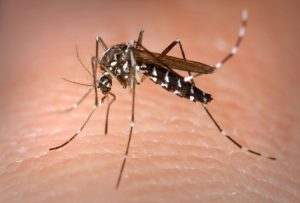
We hoped you enjoyed your vacation too and gave you some inspiration for your next year’s vacation. Thanks in advance ! As always we end with a quote…
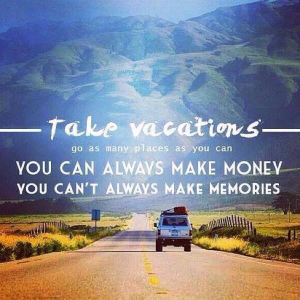

No Comment
You can post first response comment.